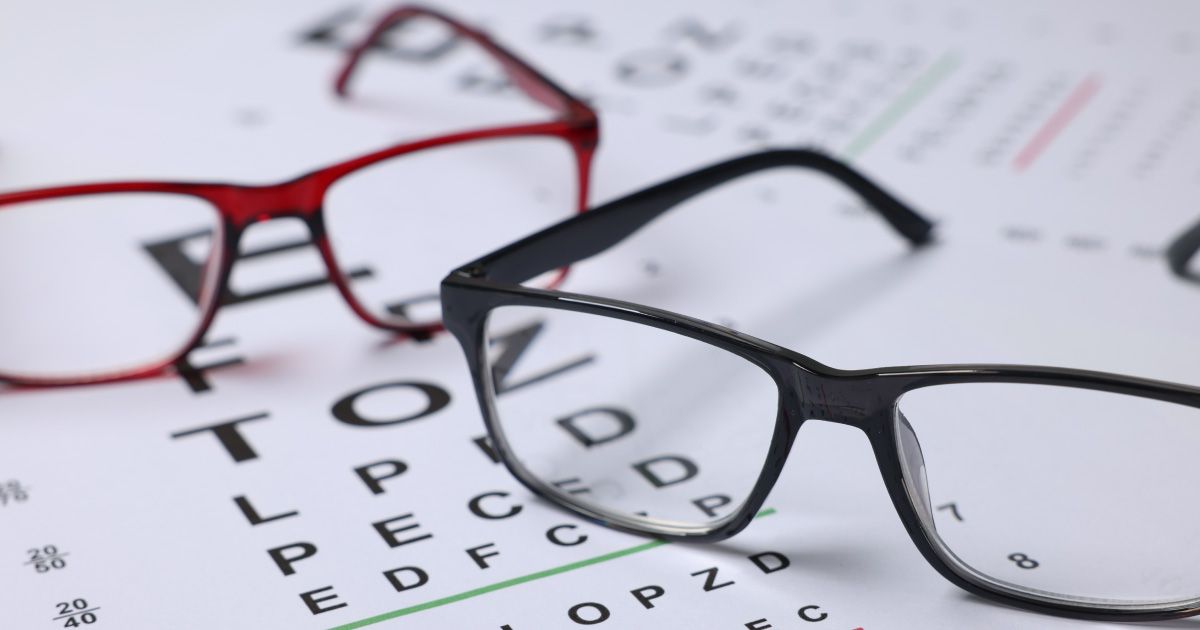Screen Fatigue and the Hidden Benefits of Digital Lenses

Read time: 6 minutes
Most people spend more time than they realize staring at screens. At work, at home, or even when waiting in line, so much of daily life gets filtered through something digital. In San Diego, fall means shorter days, cooler evenings, and a move indoors for students and professionals alike. More inside time often means an uptick in screen use, whether it is homework, streaming shows, messages, or deadlines. That steady diet of screens can wear down the eyes before you notice.
One thing you may hear about is digital lenses. These lenses are designed to handle the demands of screen use, reduce glare, and fight eye fatigue. So, do they really matter, or are they just another label that sounds helpful? It's worth looking at what goes on inside your eyes during long screen sessions and what these specialty lenses actually do.
What's Actually Happening to Your Eyes During Screen Time
When you stare at a screen, your eyes focus closer for longer periods than when reading a printed page or looking out the window. The blink rate also drops, which can dry out your eyes - especially in the fall, when San Diego brings drier air inside homes and offices with AC or heating. The less you blink, the drier your eyes can get, and the more likely you are to notice discomfort.
Many people end up with tired, scratchy, or red eyes by the end of the day. Sometimes there are headaches, trouble shifting focus from close to far, or a mild sense of blurred vision. Small, repeated habits (hours on phones before breakfast, back-to-back meetings on laptops, scrolling right up until bedtime) leave a mark over time.
Not everyone will have the same symptoms. Some people can run through a full digital day with no issues, while others feel the strain after only a few emails. Still, the impact of these tiny habits adds up by the end of each week, especially during the busier fall season.
What a Digital Lenses Is Designed to Do
A digital lens is built to handle screen use in a way that basic lenses are not. For one, digital lenses often feature a specific curve or aspheric design to help keep the eyes relaxed at close distances, making those long stretches at a laptop more comfortable. They might use advanced coatings or filters meant to manage how harsh screen light reaches your eyes, especially the blue-white tones common on most devices.
Another detail is how these lenses smooth out visual shifts. When you glance from keyboard to monitor, swipe on a tablet, then look at a TV across the room, your eyes are forced to refocus often. Digital lenses can ease these transitions and help prevent that subtle, hard-to-pinpoint eye strain.
A digital glasses lens is not a fix-all. It does not erase every symptom or block all blue light, but it is created to lessen the load on your eyes by managing glare, sharpening edges, and making tiny focus changes less of a chore.
Urban Optiks Optometry offers digital-specific lens options with blue light protection and anti-reflective coatings, all measured and fitted onsite. Their advanced lenses are made in independent European labs, known for precise lens crafting tailored to modern screen needs.
Do These Lenses Really Help With Daily Screen Use?
The benefits depend on the user, but many notice improvements after switching. For students handling hours of reading, writing, and screen-based learning, or for office professionals bouncing between meetings and spreadsheets, these lenses can make a tangible difference. People who frequently transition from reading small print to glancing up at a large display notice relief from tension and subtle headaches as well.
But the lens is only part of the solution. Screen placement, lighting, posture, and regular breaks play a big role in how rested your eyes feel. A digital glasses lens can support better habits, but it won't replace them. Even with the right lenses, skipping rest or using poorly adjusted screens will lead to discomfort.
If you already feel better after a quick walk or looking across the room, those breaks are doing more work than you might think. The best results come by pairing the right lens with smart routines—set your screen at eye level, adjust brightness, and use the 20-20-20 rule: look away every 20 minutes for 20 seconds at something 20 feet away.
When Basic Lenses Aren’t Enough Anymore
Some signs mean a simple pair of basic lenses is no longer cutting it. If you hit a wall every day by three in the afternoon, or your eyes feel gritty no matter how much sleep you get, it could signal that your everyday lenses are not lining up with modern routines. This often happens as people move through their 30s and 40s, when focusing at close distances becomes a little tougher.
Switching to different frames without considering the lens design can make things worse, especially if the new glasses do not sit in the same place or if the lenses are not optimized for screens. In some cases, the wrong lenses force you to lean in closer or tilt your head, which can lead to neck or shoulder aches by the evening.
Here are some signs it may be time to consider a digital glasses lens for screen use:
- Eye fatigue becomes a daily routine during or after screen-heavy days
- You notice focus gets blurrier more regularly, especially moving between close and far distances
- You feel more comfortable after short breaks, but symptoms come back quickly
- Your posture changes or your eyes feel relief only when you close them
The Takeaway
Fall in San Diego means more hours spent inside, with longer homework, study sessions, or online meetings. It is a good time to check if your eyewear actually suits how much you use digital devices. A digital glasses lens is not magic, but it offers practical support by matching lens design to the way you work, learn, and relax indoors.
By combining a lens that handles screen glare and focus with simple adjustments (like changing your desk setup and building in regular screen breaks), you may find the eye strain that once slowed you down begins to fade into the background. Take the time to notice how your eyes feel after a full day this fall—being proactive can make every hour in front of a screen feel less of a challenge, no matter what your routine looks like.
Long days on screens can wear down your focus, but the right lenses can make a noticeable difference over time. We’ve seen how a shift in lens design helps people feel less strain and more clarity during everyday digital routines. A good pair doesn’t just correct vision - it supports how you actually use your eyes throughout the day. See how a digital lenses might make things easier by reaching out to Urban Optiks Optometry to set up a visit.
Share this blog post on social or with a friend:
The information provided in this article is intended for general knowledge and educational purposes only and should not be construed as medical advice. It is strongly recommended to consult with an eye care professional for personalized recommendations and guidance regarding your individual needs and eye health concerns.
All of Urban Optiks Optometry's blog posts and articles contain information carefully curated from openly sourced materials available in the public domain. We strive to ensure the accuracy and relevance of the information provided. For a comprehensive understanding of our practices and to read our full disclosure statement, please click here.


















